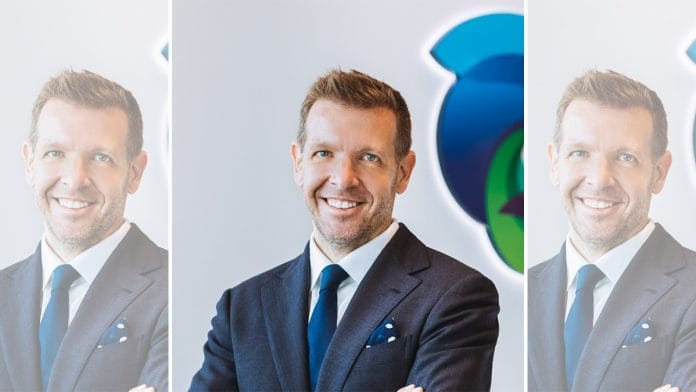New Delhi: Looking beyond the affluent markets that can afford to buy nutritional supplements, Dutch multinational corporation Royal DSM — active in the fields of nutrition, health and sustainable living — is looking to scale up its production of rice fortified with Vitamin A.
According to François Scheffler, Regional Vice-President, Human Nutrition and Care, Asia Pacific & President, DSM Asia Pacific, this will improve the nutritional profile of over 900 million people in India fighting for food security.
In an exclusive interview to ThePrint, Scheffler said that Royal DSM is working with the government, NGOs and rice millers in India to expand its production.
“About 100 million tonnes of rice is consumed in India every year. This is a fifth of the global world rice consumption. And with the plans we have, we will be able to fortify just 4 million tonnes. So, this is not even 5 per cent,” said Scheffler.
“We have a target that we gave ourselves — by 2030 we need to touch nearly 850 million people whose nutritional status we have been able to improve. We provide a fortification, a multivitamins blend, which is called premix for oil, flour, and sugar,” he added.
In his Independence Day address to the nation last year, Prime Minister Narendra Modi had announced plans to provide fortified rice through all central government schemes by 2024.
“We are very thankful that Prime Minister Modi’s government has mandated the fortification of rice, at least in the social safety nets part of the rice pipeline in India. DSM has been working on creating the right blend of multivitamins that has a combination of iron with vitamin A and E, which is not always stable,” said Scheffler
Also Read: What’s fortified rice, why is Modi govt pushing it & why some experts aren’t excited
Fortified rice and malnutrition issues in India
Fortified rice is made as per the standards fixed by the food regulator Food Safety and Standards Authority of India (FSSAI) which has prescribed blending rice with three micronutrients — iron, folic acid and vitamin B12.
According to the FSSAI, In India, rice is fortified using “extrusion technology”. In this process, “milled rice is pulverised and mixed with a premix containing vitamins and minerals. Fortified rice kernels (FRK) are produced from this mixture using an extruder machine and added to traditional rice in a ratio ranging from 1:5 to 1:200, resulting in fortified rice nearly identical to traditional rice in aroma, taste, and texture.”
India has the highest prevalence of clinical and subclinical VAD (Vitamin A deficiency) among South Asian countries. A study had found 62 per cent of preschool children in India to be deficient in vitamin A. These dramatic results suggested a high mortality rate, leading to an annual 330,000 child deaths. Estimates confirmed 31 per cent to 57 per cent preschool children to be the victims of subclinical VAD. Women of childbearing age excessively suffered from night blindness, the study found, with 5 per cent pregnant women manifesting subclinical VAD.
Scheffler said that for over 20 years, oil, sugar, and flour have been quite well known in the fortification world — with established NGOs and governments and industry driving such efforts. However, rice, which is a staple food for a population of almost 3 billion people across the world, has long been overlooked. “Rice has very little nutritious value other than its calorific value,” he said. “So, over the past five years or so, we have developed fortification methods for rice.”
A lot of work — over six years of research — has gone into ensuring that the look and taste of rice remains the same after fortification, said Scheffler, “so, if you steamed or boil the fortified rice, it tastes the same and the added nutrients are not lost.” This way, the nutrition is inculcated in the existing food culture of the geographical space, he added.
Also Read: World is worried about India banning rice exports, but no threat to food security yet
‘Malnutrition not limited to the underprivileged’
While the Covid-19 pandemic raised awareness and the demand for nutraceuticals, it is primarily the affluent markets that consume supplements, Scheffler explained.
And while the fortification task is challenging, it will benefit the most underprivileged sections of the society for whom rice is the premium source of caloric intake, he added.
“To give an idea of how demanding this task is, the DSM team has just been to the eastern part of India and spent three weeks traveling thousands of kilometres to just be able to visit 29 rice millers and to educate them and convince them about the merits of fortifying the rice,” he said, adding that there are thousands of rice millers in India.
According to Anand Diwanji, South Asia Director-Human Nutrition and Care, DSM, apart from reaching the population that gets rice through ration shops or the government scheme, DSM is also targeting the regular market which does not mandate fortification of rice.
“We feel malnutrition is not limited to the economically-weaker sections of the society,” Diwanji said.
Scheffler added that with a faster pace of life, there is an increasing shift to fast foods and even in developed countries, women and children are found to be deficient in vital nutrients.
“So, in food fortification, you don’t have to always concentrate on the social safety networks. It’s required across the whole range of consumers,” he added.
(Edited by Anumeha Saxena)
Also Read: India’s real food problem isn’t hunger but loss and wastage






